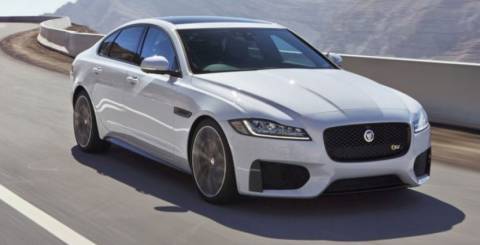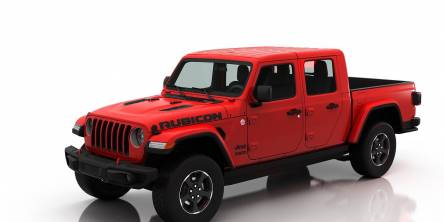5 Cons of Buying the Jaguar XF (X250)

The birth of Jaguar XF fell during a rather difficult period in the history of the brand. All engineering and design work was carried out even when Jaguar entered the Ford empire, but just in the year, the model entered the market, control over the company passed to the Indian concern, Tata. Nevertheless, the change of ownership went smoothly, and this "revolution at the top" did not in any way affect the launch of the model in the series, although many experts at the time predicted that the company would have difficulties in supplying the necessary components. Design and Engineering Center designers used a Ford DEW98 rear-wheel-drive platform as the basis for a project with factory code X250. However, in 2006, when it became clear that cooperation with Jaguar was coming to an end, Ford stopped not only all development of new cars based on this platform but also the assembly of production models.
Indeed, the car dubbed the Jaguar XF and presented as a concept in the spring of 2007 at NAIAS in New York, and as a production car in the fall of that year in Frankfurt, had many common components with Ford cars. First of all, this concerned the line of engines: the early XFs were equipped with a 2.0-liter Ford Ecoboost gasoline turbo engine with a capacity of 240 hp, a three-liter 238-horsepower naturally aspirated V6 Jaguar AJ 126 (which is a slightly modified Ford Duratec). The diesel V6 Lion (Ford AJD) with a volume of 2.7 liters (204 hp) and 3.0 liters with a capacity of 240 or 275 hp also had Ford roots. (since 2009, the XF has only been equipped with three-liter diesels).
In addition, from its predecessors, the Jaguar S-type and the larger XK and XKR, the model got two petrol V8s of 4.2 liters, naturally aspirated AJ33 (300 hp), and equipped with a mechanical supercharger AS33S (420 hp). In 2009, a "supercharged" version of the XFR appeared with a 5-liter AJ-V8 Gen III producing 510 hp. (this engine was also equipped with a supercharger). This was the car used by Paul Gentilozzi during his record-breaking races on the Bonneville salt lake.
In a pair to all these engines, 6-speed hydromechanical automatic machines ZF 6H26 and 6HP28 were chosen, the cars could have both rear-wheel and four-wheel drive.
The work of the designers should be specially noted. The exterior of the new item was handled by Ian Callum, and when working on the body, methods of computer aerohydrodynamic modeling (CFD, Computational Fluid Dynamics) were widely used, and the work on the interior was headed by Alistair Whelan. He managed to make some kind of revolution in the internal design of Jaguar: if the interior of the previous models evoked associations with Victorian and Windsor styles, as well as furniture in the Chippendale style (massive, wooden, rich), then in the design of XF the bet was made on more modern forms and a combination of leather, wood, and aluminum. In addition, the model was distinguished by a high saturation of electronic systems and the first appeared automatic transmission control selector not in the form of a lever or buttons, but in the form of a retractable rotor controller ("washer").
In 2011, the car underwent restyling, which primarily affected the lighting technology and the design of the front and rear parts of the car. In addition, at the same time, the range of engines was supplemented by an economical 2.2-liter Duratorq diesel engine with a capacity of 190 hp, and the 6-speed automatic machines were replaced by the 8-speed ZF 8HP70 gearbox.
In general, sales of Jaguar XF went very smoothly: the car immediately gained sufficient popularity (30,906 cars were sold in 2009), and kept it until 2016, when it was replaced by the second generation Jaguar XF. The peak of this popularity came in 2014 - then more than 48,000 XFs were sold in the world, and a total of 202,678 such cars were sold from 2008 to 2016.
Cons of Buying Jaguar XF (X250)
1. Сar interior size
Those who decide to purchase the Jaguar XF as the only family car must take into account the following circumstance: the British designers, of course, have somewhat changed their priorities compared to the times when they managed to make a five-meter sedan. The space in the second row of the XF's seats, however, is by no means a strong point.
2. Ergonomic buns and deprecated head unit
In fact, the owners evaluate the interior design and equipment of the cabin more than positively, and we will return to this conversation. But, as they say, there are spots in the sun, so even the most successful and popular car models have their drawbacks. So the owners of Jaguar XF in their reviews describe not only their delights but also specific negative points.
The main disadvantage is the inconvenient location of the support for resting the left leg, and this is annoying on a long journey. This stop is too close to the brake pedal, and in order for the foot to be level on it, and not on the left back side, it is necessary that the legs are tightly squeezed.
But the quality of the monitor is not all the claims to the creators of XF. In a huge number of reviews, the authors negatively assess the fact that many functions are controlled through the menu on the screen. What can I say, the owners estimate the operating system itself as "braking". Well, and a couple of complaints about the "external ergonomics": for example, the wipers cannot be fixed in the raised position, and when closing the trunk, you must grab it from the outside, getting your hands dirty. All this, of course, is a trifle, but the bar of requirements for a premium car is set at a fair height.
3. Ground clearance
The Jaguar XF has one design feature that imposes significant restrictions on its operation: it is a very low ground clearance. It is 130 mm, which is really a bit. Firstly, the owners warn that when parking perpendicularly near high enough curbs, you need to be very careful, otherwise you can easily damage the bumper. The situation is aggravated by the fact that often parking sensors "do not see" these very curbs.
Secondly, the low ground clearance and the stiff enough sports suspension can make a trip to the regions, not the most comfortable. But the main concern is this parameter (on which the cross-country ability depends) is delivered in the winter.
4. Fuel consumption
The discussion on fuel efficiency is not getting the most attention in the Jaguar XF's online communities. Although, if you think about it, why is it especially surprising? A person who buys a sports sedan with a powerful engine usually realizes that nothing is given for free and that the herd of horses under the hood still needs to be fed. Nevertheless, fuel consumption, as a rule, is mentioned among the obvious disadvantages of this model.
It is clear that the specific consumption figures very much depend on what kind of engine the car is equipped with, and, naturally, the owners of diesel versions have the least claims of this kind. On the contrary, they just attribute fuel efficiency to the number of advantages of their cars and often do not give it a single line at all.
5. Car repair and maintenance
Jaguar XF reviewers mention maintenance costs as one of the shortcomings. Well, everything seems to be clear: maintenance of cars of premium brands, as a rule, costs significantly more than in the case of models of the mass segment. But you start looking through the reviews and you are surprised to find that specific numbers do not boggle your imagination and do not cause much rejection.
In addition, in many reviews, owners complain that the car often requires replacement of brake discs, so that this operation can also be attributed to maintenance.
Car repair can be extremely expensive, especially since for a number of items, non-original spare parts are absent as a class, and original ones cost a lot of money.
Similar Articles
Before you lease a car, you need to understand lease agreements, research the market, and be aware of the ways some car leasing companies may try to manipulate you.
Learn how to safely remove your Jeep hardtop alone. Follow step-by-step tips, use the right tools, and enjoy open-air adventures with confidence.
When it comes to getting a new car, one of the biggest decisions you’ll face is whether to lease or buy. Both options have their pros and cons, but making the right choice depends on your financial goals, driving habits, and personal preferences
Find a reliable car shipping service with our guide! Learn about pricing, transport options, insurance, reviews, and support to make a safe, informed choice.
Cars face different challenges as seasons change. The scorching summer sun can damage paint and interiors, while winter road salt corrodes metal components. Rain in spring and fall brings its own set of issues with moisture and organic debris.
Accessorizing your Chevy Malibu improves your driving experience with practical benefits. The global car accessories market, worth over $442 billion in 2023, is projected to expand significantly, showcasing a robust movement toward vehicle customization.
Regardless of the age, the car can be maintained in decent condition both by the hands of professionals (whom the conditions and means allow) and by one's own efforts. Taking care of the car will not only allow you to maintain an attractive appearance but also reduce the costs of its maintenance
Discover stress-free travel with black car services! Enjoy luxury, punctuality, and personalized comfort for a seamless day of exploration and relaxation.
Learn how to source reliable replacement parts for specialty car brands like Porsche, Tesla, and Mercedes-Benz, ensuring performance and compatibility.









